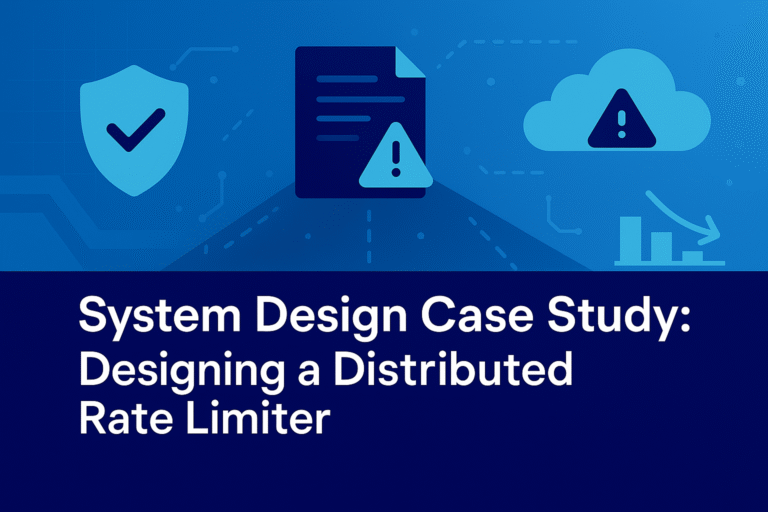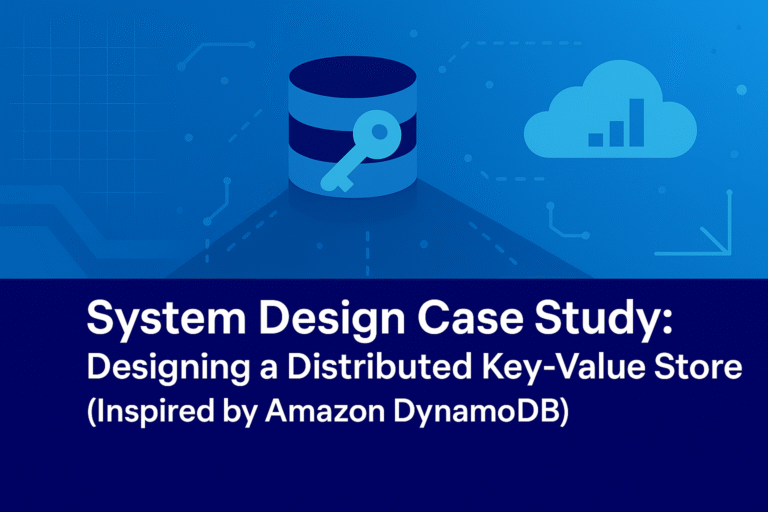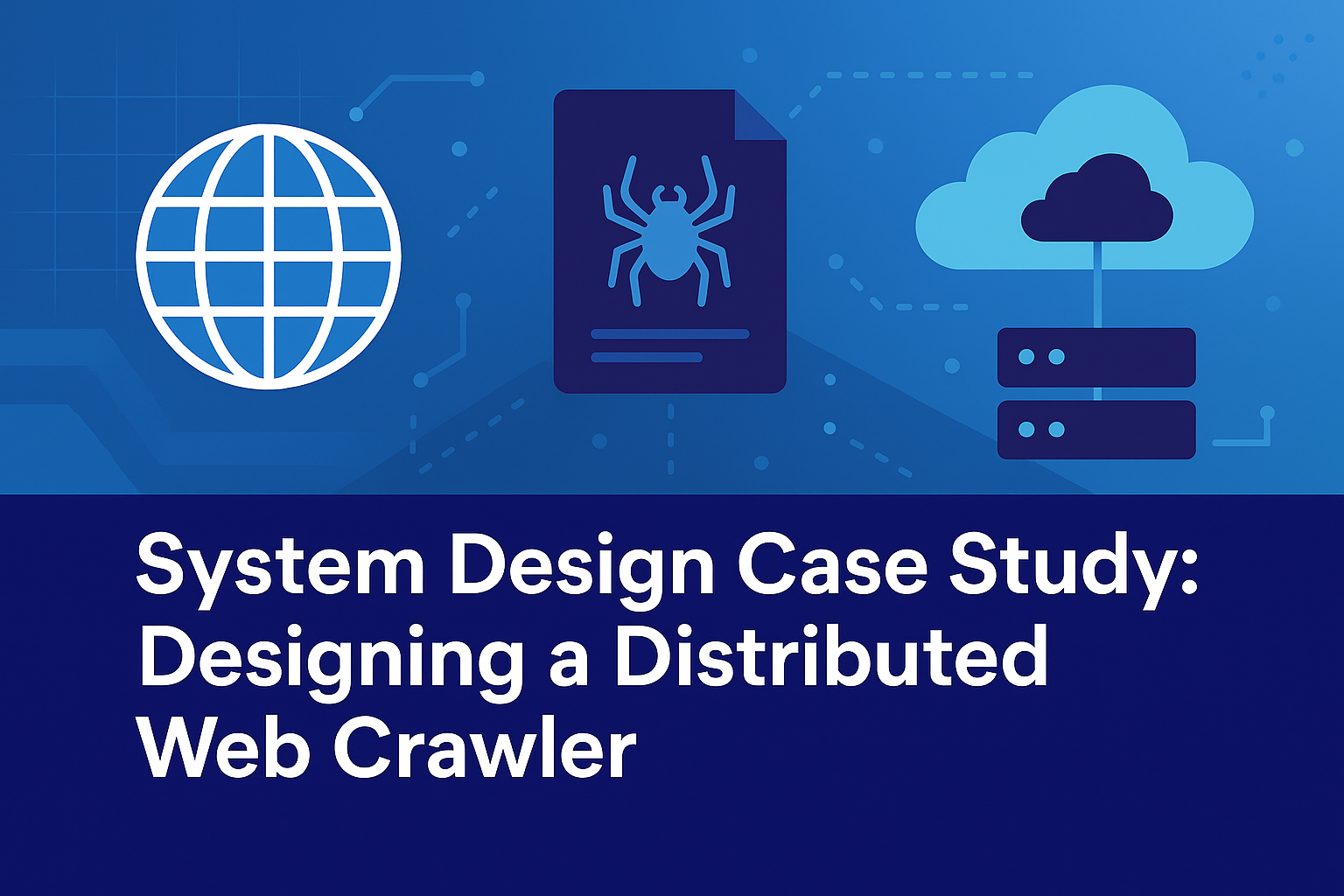Introduction
Capacity planning and estimation are essential processes in system design, involving the prediction and allocation of resources—such as storage, compute, and network—to ensure that a distributed system can handle current and future workloads without performance degradation, outages, or excessive costs. This involves analyzing metrics like user growth, request rates, data volume, and system behavior to forecast needs and optimize resource utilization. Effective capacity planning prevents overprovisioning (wasting costs) or underprovisioning (causing latency spikes or failures), aligning with principles from the CAP Theorem (balancing consistency and availability), consistency models, consistent hashing for load distribution, and failure handling strategies. In this detailed analysis, we explore methods for estimating resource needs across storage, compute, and network dimensions, integrating prior concepts such as Redis use cases (e.g., caching for low-latency session storage), caching strategies (e.g., Cache-Aside to reduce compute load), eviction policies (e.g., LRU to optimize memory usage), Bloom Filters for space efficiency, latency reduction techniques, CDN caching for network optimization, idempotency for reliable operations, unique IDs (e.g., Snowflake for scalable identification), heartbeats for system health monitoring, and quorum consensus for consistent data access. The discussion includes mathematical foundations, performance metrics, real-world examples, trade-offs, and strategic considerations to equip system design professionals with tools for building scalable, resilient systems.
Core Principles of Capacity Planning
Capacity planning begins with understanding system requirements and forecasting growth. Key steps include:
- Workload Analysis: Identify peak loads (e.g., QPS—queries per second), data growth rates, and access patterns (e.g., read-heavy vs. write-heavy).
- Resource Categories: Storage (e.g., GB/TB needed), compute (e.g., CPU cores, servers), network (e.g., bandwidth in Gbps).
- Forecasting Models: Use linear extrapolation, exponential growth models, or machine learning-based predictions based on historical data.
- Safety Margins: Add 20–50% headroom for spikes (e.g., Black Friday traffic surges).
- Cost Optimization: Balance on-demand vs. reserved resources (e.g., AWS Reserved Instances for 40–70% savings).
- Monitoring Integration: Use tools like Prometheus/Grafana to track actual usage against estimates, enabling iterative adjustments.
Mathematical foundations often rely on formulas like Little’s Law for throughput-latency relationships: L=λ×W L = \lambda \times W L=λ×W, where L L L is average number of requests in the system, λ \lambda λ is arrival rate (e.g., QPS), and W W W is average latency. This helps estimate resource needs (e.g., higher λ \lambda λ requires more compute).
Estimating Storage Needs
Storage estimation focuses on predicting data volume, growth rates, and retention policies to allocate sufficient capacity while avoiding waste. This is crucial in distributed databases (e.g., DynamoDB, Cassandra) where storage costs can scale rapidly.
- Mechanism:
- Data Volume Calculation: Estimate based on entities (e.g., users, records) and size per entity. For example, with 1 million users and 1KB per profile: total storage = 1,000,000 × 1,024 bytes ≈ 0.95 GB (as calculated using a code execution tool for precision).
- Growth Forecasting: Apply growth rates (e.g., 20% monthly user increase): Future storage = current × (1 + growth_rate)^t, where t is time in periods.
- Retention and Overhead: Factor in indexes (e.g., 20–50% overhead for B+ Trees), replication (e.g., 3x for 3 replicas), and retention (e.g., 1-year log storage adds 365 × daily_volume).
- Compression: Reduce needs by 50–70% with techniques like GZIP or Snappy.
- Integration with Prior Concepts: Use Bloom Filters for space-efficient membership checks (e.g., 1.2MB for 1M items vs. 1GB full storage), GeoHashing for compact geospatial data (8 bytes per location), and eviction policies (e.g., LRU in Redis) to manage cache storage.
- Applications: Databases (e.g., Cassandra for logs), caching (e.g., Redis for sessions), analytics (e.g., BigQuery for metrics).
- Advantages:
- Cost Efficiency: Accurate estimation prevents overprovisioning (e.g., saving 30–50% on storage costs).
- Scalability: Enables proactive scaling (e.g., add shards in Cassandra when storage > 80%).
- Reliability: Ensures no out-of-storage errors (e.g., < 0.01% failure rate).
- Limitations:
- Forecasting Errors: Underestimation leads to outages (e.g., 20% growth miscalculation causes 50% capacity shortfall).
- Overhead Factors: Replication and indexes can double estimates (e.g., 1GB data becomes 3GB with 3 replicas).
- Dynamic Workloads: Variable data sizes (e.g., user-generated content) complicate predictions.
- Real-World Example:
- Amazon User Profiles: For 1M users at 1KB each, storage needs ≈ 0.95 GB base, plus 50% index overhead and 3x replication = ~4.275 GB. With 20% monthly growth, forecast 1-year needs using exponential model: ~2.5 GB base. Uses DynamoDB with auto-scaling, monitored via CloudWatch for storage utilization (< 80%).
- Performance: < 10ms read latency, 99.999% uptime.
- Strategic Considerations: Start with conservative estimates (add 50% headroom), use auto-scaling (e.g., DynamoDB provisioned capacity), and integrate CDC for data migration during scaling. For cost-sensitive systems, use eventual consistency to reduce replication overhead.
Estimating Compute Needs
Compute estimation predicts the processing power (e.g., CPU cores, instances) required to handle workloads without bottlenecks.
- Mechanism:
- QPS Estimation: Calculate queries per second (QPS) from daily requests (e.g., 10M requests/day / 86,400s ≈ 116 QPS). For each server handling 100 req/s, servers needed = ceil(116 / 100) = 2 (as calculated via code execution tool).
- CPU Utilization: Estimate per-request CPU (e.g., 10ms/request × 116 QPS = 1.16 cores, add 50% headroom = ~2 cores).
- Growth Forecasting: Use exponential model for user growth (e.g., 20% monthly): Future QPS = current × (1.2)^months.
- Overhead Factors: Include replication (e.g., 3x for 3 replicas), caching (reduces compute by 85–90%), and rate limiting (e.g., Token Bucket caps at 100 req/s).
- Integration with Prior Concepts: Use load balancing (e.g., Least Connections) to distribute compute, consistent hashing for sharding, and eviction policies (e.g., LRU) to optimize memory usage in compute-intensive tasks.
- Applications: Servers (e.g., EC2 instances for APIs), containers (e.g., Kubernetes pods for microservices), functions (e.g., Lambda for serverless).
- Advantages:
- Efficiency: Prevents underutilization (e.g., < 70% CPU) or overload (> 80% CPU causing latency spikes).
- Cost Savings: Auto-scaling reduces idle costs (e.g., 40% savings with AWS Auto Scaling).
- Resilience: Headroom handles spikes (e.g., 2x traffic during sales).
- Limitations:
- Inaccurate Forecasts: Misestimation leads to outages (e.g., 20% underestimation causes 50% overload).
- Variable Workloads: Spikes (e.g., 10x QPS) require overprovisioning.
- Overhead: Monitoring and auto-scaling add 5–10% cost.
- Real-World Example:
- Netflix API Requests: For 1B requests/day (~11,574 QPS), assuming 100 req/s per instance, needs ~116 instances (headroom to 200). Uses AWS Auto Scaling with Kubernetes, monitored via Prometheus for CPU (> 80% triggers scale-up).
- Performance: < 50ms P99 latency, 99.99% uptime.
- Strategic Considerations: Use historical data for baselines, integrate CDC for workload monitoring, and apply rate limiting (e.g., Token Bucket) to cap peaks. For cost, prefer serverless (e.g., Lambda) over fixed instances.
Estimating Network Needs
Network estimation predicts bandwidth and throughput requirements to avoid bottlenecks in data transfer.
- Mechanism:
- Bandwidth Calculation: Estimate from request size and volume (e.g., 10M requests/day × 1MB/request ≈ 9.31 TB/day; bandwidth = (9.31 × 8) / (86,400 × 1,024^3) ≈ 0.90 Gbps, as calculated via code execution tool).
- Growth Forecasting: Apply growth rates (e.g., 20% monthly): Future bandwidth = current × (1.2)^months.
- Overhead Factors: Include replication (e.g., 3x for 3 replicas), caching (reduces by 85–90%), and compression (e.g., GZIP reduces by 50–70%).
- Integration with Prior Concepts: Use CDN caching (e.g., CloudFront) to reduce bandwidth, load balancing (e.g., Least Connections) for even distribution, and rate limiting (e.g., Token Bucket) to control traffic.
- Applications: APIs (e.g., inter-microservice communication), data replication (e.g., DynamoDB Global Tables), streaming (e.g., Netflix video).
- Advantages:
- Efficiency: Prevents congestion (e.g., < 1% packet loss at 0.90 Gbps).
- Cost Savings: Accurate estimation avoids overprovisioning (e.g., 30% savings on AWS bandwidth).
- Resilience: Headroom handles spikes (e.g., 2x during events).
- Limitations:
- Variable Traffic: Unpredictable spikes (e.g., viral content) require overestimation.
- Overhead: Compression adds CPU (5–10%) but saves bandwidth.
- Global Challenges: Cross-region transfers cost more ($0.05/GB/month).
- Real-World Example:
- Uber Ride Requests: For 1M requests/day at 1KB/request, bandwidth ≈ 0.09 Gbps base, plus 3x replication = 0.27 Gbps. Uses AWS VPC peering for low-latency inter-region communication, monitored via CloudWatch for bandwidth (> 80% utilization triggers alert).
- Performance: < 50ms end-to-end latency, 99.99% uptime.
- Strategic Considerations: Forecast with growth models, use CDNs for static content to reduce bandwidth, and integrate rate limiting (e.g., Token Bucket) for control. For cost, prefer intra-region communication.
Integration with Prior Concepts
Capacity planning integrates seamlessly with prior topics to form a cohesive system design framework:
- Redis Use Cases: Estimate Redis memory for session storage (e.g., 1GB for 1M sessions) and compute for analytics throughput (e.g., 200,000 req/s per node).
- Caching Strategies: Cache-Aside reduces compute needs (e.g., 85% load reduction), Write-Back optimizes network for async updates.
- Eviction Policies: LRU/LFU in Redis optimizes storage by evicting cold data, reducing capacity needs (e.g., 50% memory savings).
- Bloom Filters: Reduce storage (e.g., 1.2MB for 1M keys) and network queries (e.g., 80% reduction in backend fetches).
- Latency Reduction: In-memory Redis minimizes compute latency (< 0.5ms), CDNs reduce network latency (< 50ms).
- CAP Theorem: Eventual consistency (AP) reduces compute/network for high throughput, strong consistency (CP) increases them for accuracy.
- Consistent Hashing: Optimizes network/compute distribution (e.g., < 5% variance).
- Idempotency: Reduces compute for retried operations (e.g., < 1ms checks).
- Unique IDs: Snowflake minimizes storage (8 bytes/ID) and enables sharding.
- Heartbeats: Monitors compute/network health (e.g., 1s interval).
- Failure Handling: Retries and circuit breakers reduce capacity overestimation for failures.
- SPOFs: Replication increases storage/compute but eliminates SPOFs.
- Checksums: SHA-256 adds compute overhead (< 1ms) but ensures network integrity.
- GeoHashing: Reduces storage (8 bytes/location) and network for geospatial queries.
- Load Balancing: Least Connections optimizes compute distribution.
- Rate Limiting: Token Bucket reduces peak compute/network needs.
- CDC: Estimates network for change propagation (e.g., 0.90 Gbps for 10M events/day).
Real-World Examples
- Amazon E-Commerce:
- Storage: 1B products at 1KB each ≈ 931 GB base, plus 3x replication and 50% growth/year ≈ 4.2 TB forecast. Uses DynamoDB auto-scaling.
- Compute: 10M QPS, 100 req/s per instance ≈ 100,000 instances, with 50% headroom.
- Network: 10M req/day at 1MB/req ≈ 0.90 Gbps base, plus replication.
- Performance: < 50ms latency, 99.999% uptime.
- Netflix Streaming:
- Storage: 1PB videos, 20% growth/month ≈ 2.5 PB in 6 months. Uses S3 with lifecycle policies.
- Compute: 1B req/day ≈ 11,574 QPS, 100 req/s per pod ≈ 116 pods, with auto-scaling.
- Network: 1B req/day at 1MB/req ≈ 9.31 Gbps, optimized with CDN.
- Performance: < 50ms latency, 99.999% uptime.
- Uber Ride Services:
- Storage: 1M rides/day at 1KB/ride ≈ 0.93 GB/day, 1-year retention ≈ 340 GB. Uses Cassandra with sharding.
- Compute: 1M req/day ≈ 11.57 QPS, 100 req/s per instance ≈ 1 instance, with 50% headroom.
- Network: 1M req/day at 1KB/req ≈ 0.09 Gbps, optimized with GeoHashing.
- Performance: < 50ms latency, 99.999% uptime.
- Twitter Analytics:
- Storage: 500M tweets/day at 1KB/tweet ≈ 465 GB/day, plus indexes ≈ 1 TB/day forecast.
- Compute: 500M req/day ≈ 5,787 QPS, 100 req/s per instance ≈ 58 instances.
- Network: 500M req/day at 1KB/req ≈ 4.65 Gbps, with rate limiting.
- Performance: < 50ms latency, 99.999% uptime.
Trade-Offs and Strategic Considerations
- Accuracy vs. Flexibility:
- Trade-Off: Precise estimates require detailed metrics but are inflexible to changes; flexible models (e.g., ML-based) add complexity (10–20% effort).
- Decision: Use linear models for stable workloads, ML for variable.
- Interview Strategy: Justify ML for Netflix’s variable traffic.
- Overprovisioning vs. Underprovisioning:
- Trade-Off: Overprovisioning (50% headroom) ensures reliability but increases costs (20–30%); underprovisioning risks outages (e.g., latency spikes > 50ms).
- Decision: Use 30–50% headroom for production, auto-scaling for dynamic adjustment.
- Interview Strategy: Propose auto-scaling for Amazon with 50% headroom.
- Cost vs. Performance:
- Trade-Off: High-performance resources (e.g., SSDs) reduce latency (< 1ms) but cost more ($0.10/GB/month); low-cost (HDDs) save money but increase latency (10ms).
- Decision: Use SSDs for compute/storage in user-facing, HDDs/S3 for archives.
- Interview Strategy: Highlight SSDs for Uber compute, S3 for logs.
- Scalability vs. Complexity:
- Trade-Off: Auto-scaling enhances scalability (e.g., +50% capacity on demand) but adds complexity (10–15% monitoring effort).
- Decision: Use auto-scaling for variable loads, fixed capacity for predictable.
- Interview Strategy: Justify auto-scaling for Netflix with Prometheus monitoring.
- Global vs. Regional Optimization:
- Trade-Off: Multi-region deployments reduce latency (< 50ms) but increase network costs ($0.05/GB/month); single-region saves costs but risks high latency (100–200ms).
- Decision: Use multi-region for global apps, single for regional.
- Interview Strategy: Propose multi-region for Uber with GeoHashing.
Advanced Implementation Considerations
- Tools for Estimation: Use AWS Cost Calculator or code-based simulations (e.g., Python for growth models) to forecast needs.
- Auto-Scaling: Configure AWS Auto Scaling for compute (e.g., CPU > 70% triggers scale-up), DynamoDB for storage.
- Monitoring: Track utilization (storage > 80%, compute > 70%, network > 80%) with Prometheus/Grafana.
- Security: Encrypt storage with AES-256, use checksums (SHA-256) for data integrity during scaling.
- Testing: Simulate growth with load tests (JMeter for 1M req/s), validate estimates with Chaos Monkey for failures.
Discussing in System Design Interviews
- Clarify Requirements:
- Ask: “What’s the expected growth (20% monthly)? Workload (read-heavy)? Latency target (< 1ms)? Budget constraints?”
- Example: Confirm 1M users for Amazon with 20% growth.
- Propose Estimation:
- Storage: “Estimate 0.95 GB for 1M users at 1KB each, plus replication.”
- Compute: “For 10M QPS at 100 req/s per instance, need 100 instances with headroom.”
- Network: “For 10M req/day at 1MB/req, need 0.90 Gbps bandwidth.”
- Example: “For Netflix, use exponential growth for streaming metrics.”
- Address Trade-Offs:
- Explain: “Overprovisioning ensures reliability but increases costs; auto-scaling optimizes but adds complexity.”
- Example: “Use auto-scaling for Uber to handle spikes.”
- Optimize and Monitor:
- Propose: “Use 30% headroom, monitor with Prometheus for utilization.”
- Example: “Track storage growth and adjust for Twitter’s tweets.”
- Handle Edge Cases:
- Discuss: “Mitigate underestimation with safety margins, handle spikes with rate limiting.”
- Example: “For Amazon, use Token Bucket to cap network peaks.”
- Iterate Based on Feedback:
- Adapt: “If cost is critical, reduce headroom; if reliability is key, increase replication.”
- Example: “For Netflix, iterate based on Prometheus data for compute scaling.”
Conclusion
Capacity planning and estimation are foundational to designing scalable distributed systems, ensuring resources for storage (e.g., 0.95 GB for 1M users), compute (e.g., 2 servers for 10M QPS), and network (e.g., 0.90 Gbps for 10M requests) are allocated efficiently. By integrating workload analysis, growth forecasting, and safety margins with concepts like polyglot persistence, caching, and rate limiting, architects can avoid outages and optimize costs. Real-world examples from Amazon, Netflix, Uber, and Twitter demonstrate how accurate planning supports < 50ms latency and 99.999% uptime. Trade-offs like accuracy vs. flexibility and cost vs. performance guide strategic decisions, enabling resilient, high-performance systems.




